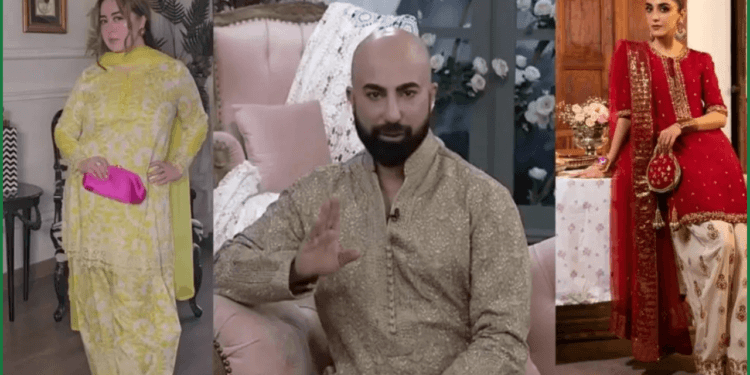The farshi shalwar, a voluminous and regal traditional garment, has stormed back into the spotlight, igniting a fiery debate within Pakistan’s fashion elite. Once a staple of Mughal-era elegance, this floor-sweeping attire is now a runway darling, with designers reimagining its timeless charm. Yet, as the trend surges across catwalks and social media feeds, two of Pakistan’s most prominent fashion moguls—Hassan Sheheryar Yasin (HSY) and Maria B—are at odds over who should wear it, turning a style revival into a cultural showdown.
The clash erupted over the weekend when HSY, appearing on a local channel’s Ramazan special, passionately championed the farshi shalwar as a must-have for all. “This is not just a trend—it’s a celebration of our heritage,” he declared, urging women across ages and body types to embrace the garment. “Stitch it, wear it, own it. Pair it with a long kameez or a knee-length shirt—it’s versatile and stunning. Even fuller figures can rock it with longer chaaks for that extra flair.” HSY’s vision is clear: fashion should unite, not divide, and the farshi shalwar’s modesty and grace make it a universal fit. Farshi Shalwar Sparks Heated Fashion Debate
Hours later, Maria B fired back via Instagram, offering a starkly different take. While praising the garment’s aesthetic, she argued it’s not a one-size-fits-all affair. “Farshi shalwars are gorgeous—my daughter Fatima, at twenty, looks divine in them,” she wrote. “But for me? It’s a maybe.” Maria B doubled down, suggesting age and physique should dictate who dares to don the trend. “If you’re short or curvy, proceed with caution. Fashion isn’t about forcing every look—it’s about what flatters you.” Her comments unleashed a torrent of reactions, with fans and critics alike picking sides.
The timing couldn’t be more dramatic. Farshi shalwars have been stealing the spotlight this season, with designers from Karachi to Lahore weaving them into collections that blend tradition with modern edge. Social media reels show influencers twirling in embroidered versions, while fashion weeks buzz with their resurgence. Yet, beneath the glamour, this debate reveals a deeper tension: Is fashion a playground for all, or a privilege for the few?
HSY’s camp sees the garment as a cultural equalizer. “It’s not about height or weight—it’s about confidence,” said one supporter on X. “HSY gets that Pakistani women want style without compromise.” Meanwhile, Maria B’s followers argue for practicality. “She’s just being real,” a commenter posted. “Not every silhouette suits every body—why pretend otherwise?”
As the feud simmers, the farshi shalwar’s fate hangs in the balance. Will it rise as a symbol of inclusive elegance, as HSY envisions, or remain a niche look for the tall and youthful, as Maria B contends? Fashion enthusiasts are watching closely, stitching their own versions—and their own opinions—into the narrative. One thing’s for sure: this is no passing fad. The farshi shalwar has reignited a conversation that’s as much about identity as it is about style, and Pakistan’s fashion scene won’t be the same.


















































